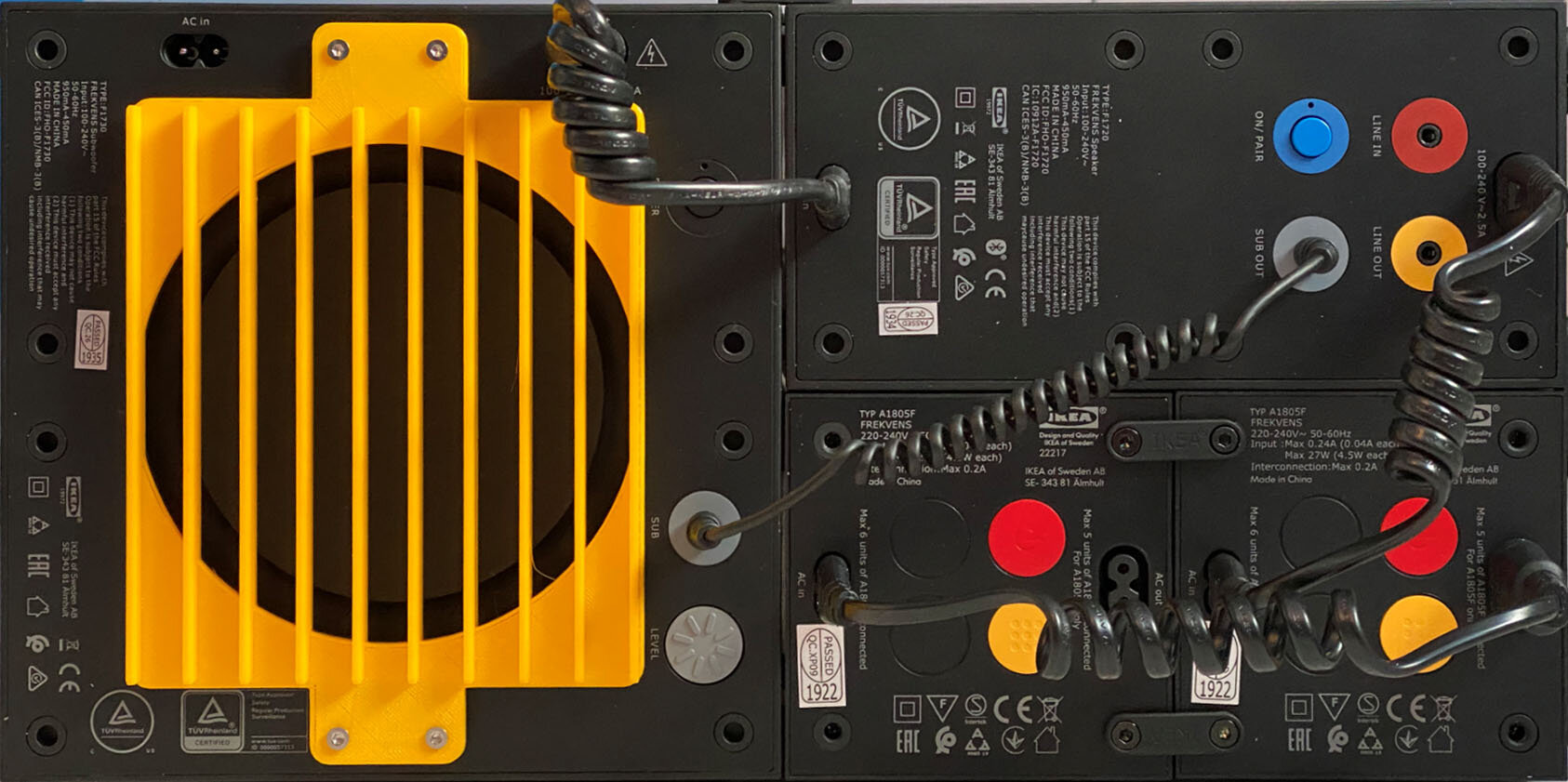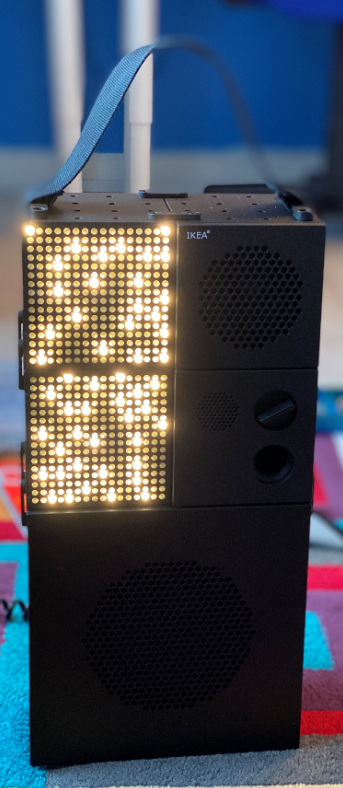Frekvens is a very interesting collaboration between Ikea (who make nice stuff) and Teenage Engineering (who make amazing stuff). The range of Frekvens branded items includes lights that flash in time to the music (always a winner), speakers, a nifty tripod, a drum you can sit on, some furniture and even a shiny raincoat that I think I’ll pass on.
We happened to be in Ikea on Monday and they had some Frekvens stuff on sale. After agonising for a nanosecond about whether or not I should get some in the end I plumped for a speaker/subwoofer combination and a couple of led light arrays. The neat thing about the different components is that you can create your own configurations simply by bolting the different elements together.
Each item has sockets for power in and power out and comes with a curly extension power cable that you can use to “daisy chain” up to seven or so devices together.
The speakers have both audio in and audio out connections so you could wire together a monster speaker array if you wanted. I went for the configuration you can see above, with the bass speaker at the bottom and the main speaker on the right. If I get bored with this I can re-arrange, or even separate the components.
The sound quality of the speaker belies their comparatively low cost. They work very well over Bluetooth (although they have line-in too). They will pair with up to 8 devices. If you buy a couple of batteries ( one for the sub and one for the speaker unit) you can make the speakers completely portable. Unfortunately the led lights need mains power, but you can’t have everything.
The led arrays have a bunch of different sound-triggered displays. They use an internal microphone to trigger the animations and they work really well, especially with John Mayer songs for some reason.
If you have a 3D printer there are some designs available that you can use to make your own custom handles and fittings. However, there was one thing they didn’t have. The subwoofer contains two driver units. One can be protected behind a removable cover, but the larger rear one is completely unprotected. I didn’t like the idea of this much, so I fired up OpenSCAD and set about designing a cover.



